The Iliad is a Greek epic poem of 15,693 lines composed sometime during the first half of the 7th century BC on the shores of Asia Minor and the very first record of poetic activity in the west. And what a start it is! The work is named after Ilios, an alternative name for Troy, the city acting as backdrop for the famous ten year conflict between Trojans and Greeks sparked by Paris’ abduction of Helen, daughter of Zeus and the most beautiful woman in the world, and eventually brought to an end by Odysseus’ device of the wooden horse. The poem has been studied for two and a half millennia and the literature about its various aspects—such as poetic technique, historical background, archaeology, and philosophy—could easily fill a library of several stories.
In many ways the poem is not only a start but also an end. The end of a more than thousand-year-old tradition of oral verse-making developed by generations of Greek bards culminating in globally incomparable refinement of vocabulary and richness of metrical effects designed to enthrall the audience by a hypnotic mosaic of syllables. Today we know this because linguistic study of the Iliad has revealed that the poem contains a highly artificial, dialectal hybrid form of Greek never spoken by any real person at any time as well as word-forms attributable to different stages in the development of the Greek language itself, ranging roughly from 2000 BC to the time of its composition. This means that the poem was composed at a unique moment in time, when both the oral-illiterate and the literary-literate worlds coexisted for a short period and the old medium was gradually converted into and adapted to the new medium. Therefore, the Iliad truly is a record of the birth of literature.
For those interested in the oral aspect of poetry and the question of what Greek epic poetry might have sounded like, we have produced a recording in reconstructed pronunciation with musical accompaniment of a substantial part of book 6 of the Iliad.
This very particular position at the watershed of the oral and the literary is undoubtedly the source of the Iliad’s continued relevance to generations of readers and scholars from different cultural outlooks. But its greatest artistic quality is in its storytelling, which unfolds, line-by-line, a vertiginously detailed organic whole that never loses sight of the overarching structural geometry. This geometric structure of storytelling has made the poem the focus of a tireless industry of scholarship in fields as far ranging as structural linguistics and field archaeology.
Yet this combination of the organic and the geometric is precisely what makes it difficult for a new student to grasp the development of the story. Due to the great degree of detail demanded by the epic style, the work can be extremely slow and thus separates structurally meaningful points and units by many hundreds or even thousands of lines. In an effort to help students in the task of grappling with this poem, which is as monumental in design as it is minute in detail, the large structural chart provided in this article outline all the main events of the Iliad in relation to its twenty-four books, the passing of days, by which the poem is divided into large structurally balancing parts, and other subsidiary episodes concerned with the tale of Troy and Greek legend at large.
Additionally you will find information about the compositional layers as they are analysed by the late M. L. West in his book The Making of the Iliad, which represents the culmination of a lifelong study of the great Trojan epic. His analysis of the different layers indicating the order in which Homer might have put together his poem is an ingenious way of reconciling the long-lasting dispute between those who believe the poem was assembled from various layers originally composed by different poets and those who believe the Iliad was composed as one piece from the first book to the last as a record of an oral performance. Both sides disregard important facts provided by the poem itself. The former ignores the essential artistic unity of the poem and the latter the obvious inconsistencies in the development of the action which indicate that the poet likely did not proceed from book alpha to omega, but acted as his own editor and made large insertions in a poem originally designed on a much smaller scale.
The center of the chart, labelled Books & lines, relates the information given to the division into books and to the line numbering. The Iliad has twenty-four books, one for each letter of the Greek alphabet. It is important to point out that this division is traditional and dictated by convenience of reference — in addition to giving the poem a universal character, encompassing everything from alpha to omega – rather than original and authorial. The book division is given in the original Greek letters: Α/1, Β/2, Γ/3, Δ/4, Ε/5, Ζ/6, Η/7, Θ/8, Ι/9, Κ/10, Λ/11, Μ/12, Ν/13, Ξ/14, Ο/15, Π/16, Ρ/17, Σ/18, Τ/19, Υ/20, Φ/21, Χ/22, Ψ/23, Ω/24.
Just above this section there is one labelled Temporal structure & days in total in which the total days of the action described in the Iliad are counted in relation to the books. Below, there is a second line on which the passing of days is counted as part of the overall structure of the poem; one might say, of its temporal rhythm. It is here that the geometrical design of the Iliad appears most clearly.
There is an introduction (I) containing 21 days. These 21 days are divided into groups of 1, 9, 1 and 12 days. The first day contains Chryses’ petition to get his daughter back, Agamemnon’s denial which sets everything else into motion. This is followed by 9 days of plague inflicted on the Greeks by Apollo as punishment for the denial of Chryses’ petition. Then there is the day on which the quarrel between Achilles and Agamemnon breaks out, as a result of which Achilles decides to withdraw from the fighting in an attempt to put pressure on Agamemnon and thus force him to an excuse. This is followed by 12 days during which the gods are feasting with the Ethiopians, and Thetis is unable to go to Zeus and entreat him to restore her son’s wounded honour by putting the Greeks into straits in the absence of her son. This introduction of 21 days is mirrored by an epilogue (I’) containing an equal number of days, in which the pattern of 1, 9, 1 and 12 days is reversed. Achilles mistreats Hector’s body for 12 days. Then there is the day on which Priam visits Achilles in his hut and recovers his son’s body. This is followed by 9 days of preparation for the funeral and then the day of the funeral itself.
This balanced introduction (I) and epilogue (I’) of 21 days each bracket the central action (II) of the Iliad in which time passes at a much more leisurely pace. This central section again consists of mirroring sections of 3 (IIa and IIa’) days each and of one day (IIb and IIb’) each. In IIa There is one day of fighting followed by a truce, during which the Greeks build defensive walls around their camp. IIa’ mirrors the temporal rhythm of IIa with an equal number of days. There is one day of fighting, during which Achilles kills Hector in the famous duel and drags him around the doomed city in front of the horrified eyes of Priam and the Trojan elders. This is followed by the day of Patroclus’ funeral and another day, on which funeral games are held in honour of Achilles’ dead friend. At the center of the Iliad there are two days of fighting each (IIb and IIb’), the first is the so called curtailed battle and the second the great battle, which extends over many thousand lines.
Above the sections titled Books and Lines and Temporal structure & days in total, there is the section Main narrative, which charts the main events of the Iliad in relation to both the temporal rhythm of the narrative and the conventional division into books.
The topmost section of the chart is occupied by Allusions to the Tale of Troy & other epic tales/ dating & biographical evidence. The Iliad, it is important to understand, is not the same as the tale of Troy. The epic poem only covers a limited part of the entire story and focuses on the wrath of Achilles. It offers only a short extract of the entire tale by interspersing its narrative with allusions to the whole tale. This was enough for the audience who was expected to be thoroughly familiar with all the episodes of the tale of Troy in its full form, from the abduction of Helen until the sacking of Troy and beyond. Allusions to the tale of Troy are found in this section and are marked red. The Iliad also makes allusion to various other epic tales set in Greece, which are marked yellow. Allusions to epic tales set in Asia Minor are in blue, e.g. Foundation legend of Rhodes on the first sheet. The Iliad further contains a number of allusions to the heroic career of Heracles, which are marked in brown. Troy also had a history before the Trojan war. Allusions to this tradition are marked in purple (with white writing).
Slightly higher up there are framed text-boxes containing evidence about the location of Homer’s homeland (in light blue) and about the date of composition (in red).
In the bottom part of each page there is a section labelled Compositional layers, where the different stages in the composition of the Iliad, as analysed in M. L. West’s The Making of the Iliad, are brought into relation with the rest of the information given above. There is not sufficient space, however, for an outline of West’s theory. Those interested are directed to read chapter 5 of the book in question (pp. 48) and compare the information give there with the corresponding section of the present chart.
Finally, I would like to point out that Zabaan occasionally offers Homeric Greek, the epic dialect used to compose the Iliad and the Odyssey. Greek and Sanskrit are structurally very closely related (see Greek – a book on Sanskrit grammar), so that anyone with an interest in Sanskrit and its epic poetry or in linguistics and the evolution of languages can profit greatly from learning to read and enjoy the fabulous poetry of the first poet of the west. It is our hope that in the future the study of Sanskrit in India will be conducted along with that of Greek because together they represent an incredible tool to investigate the development of languages and the age-old Indo-European will to express our wonder at the world through poetic song.
Below is the structural chart of the Iliad divided into sections of four books. Please click on the images to enlarge them and have a closer look.
Books 1-4
Books 5-8
Books 9-12
Books 13-16

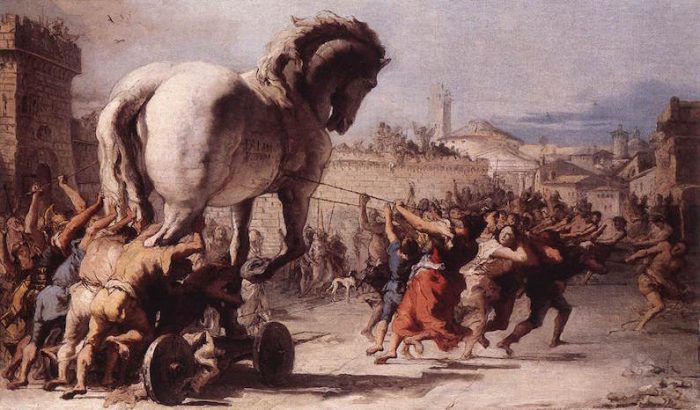
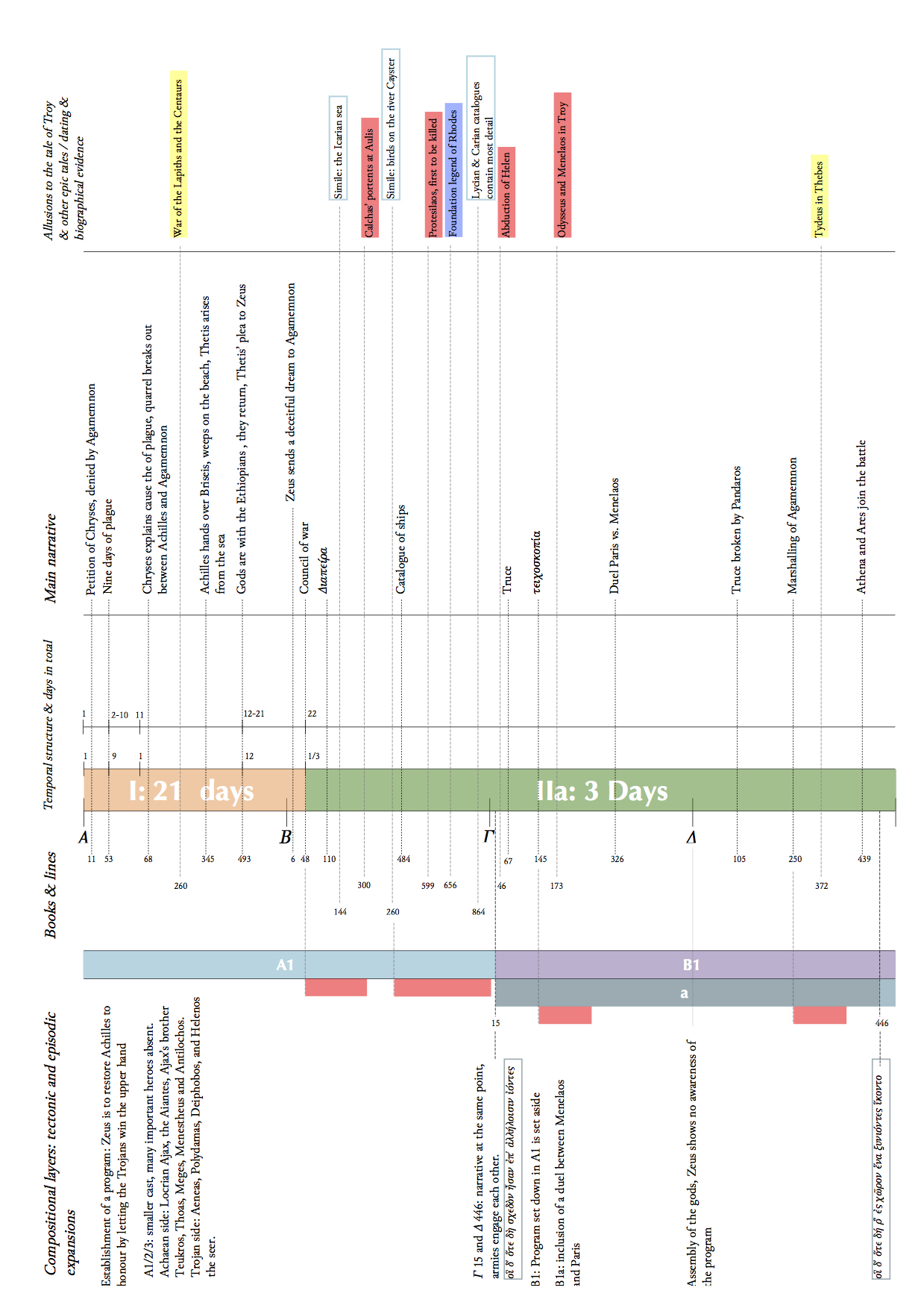
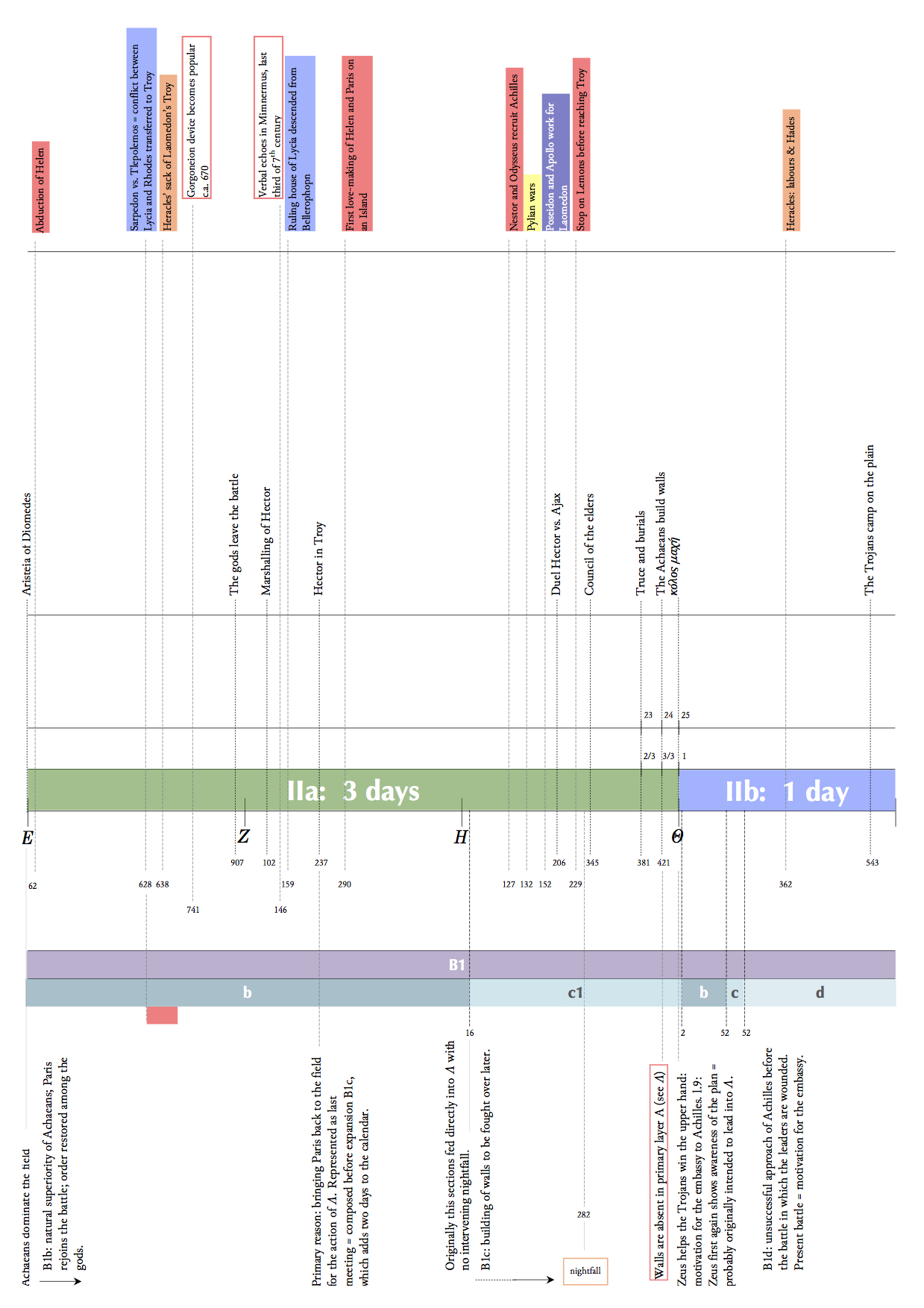
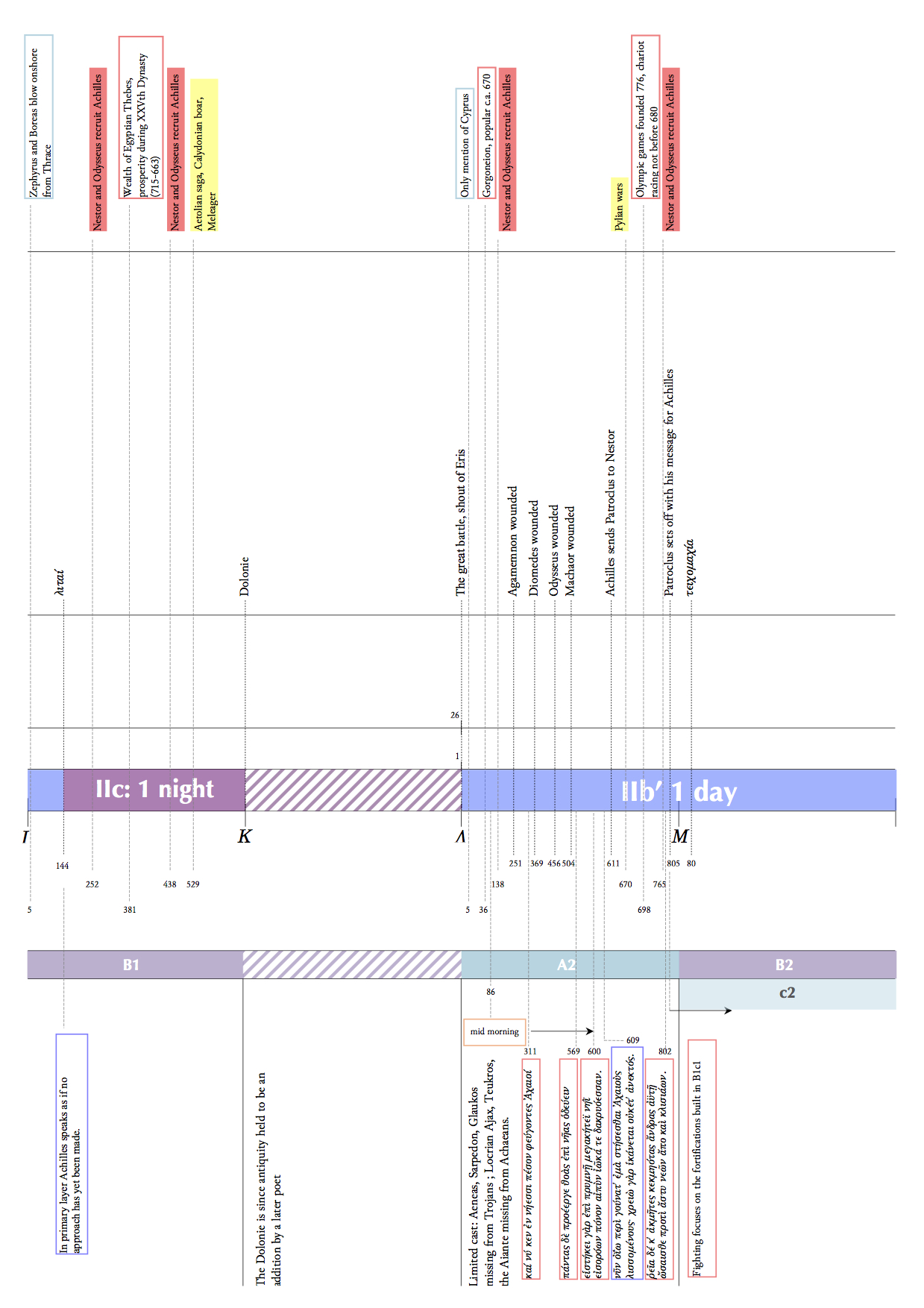
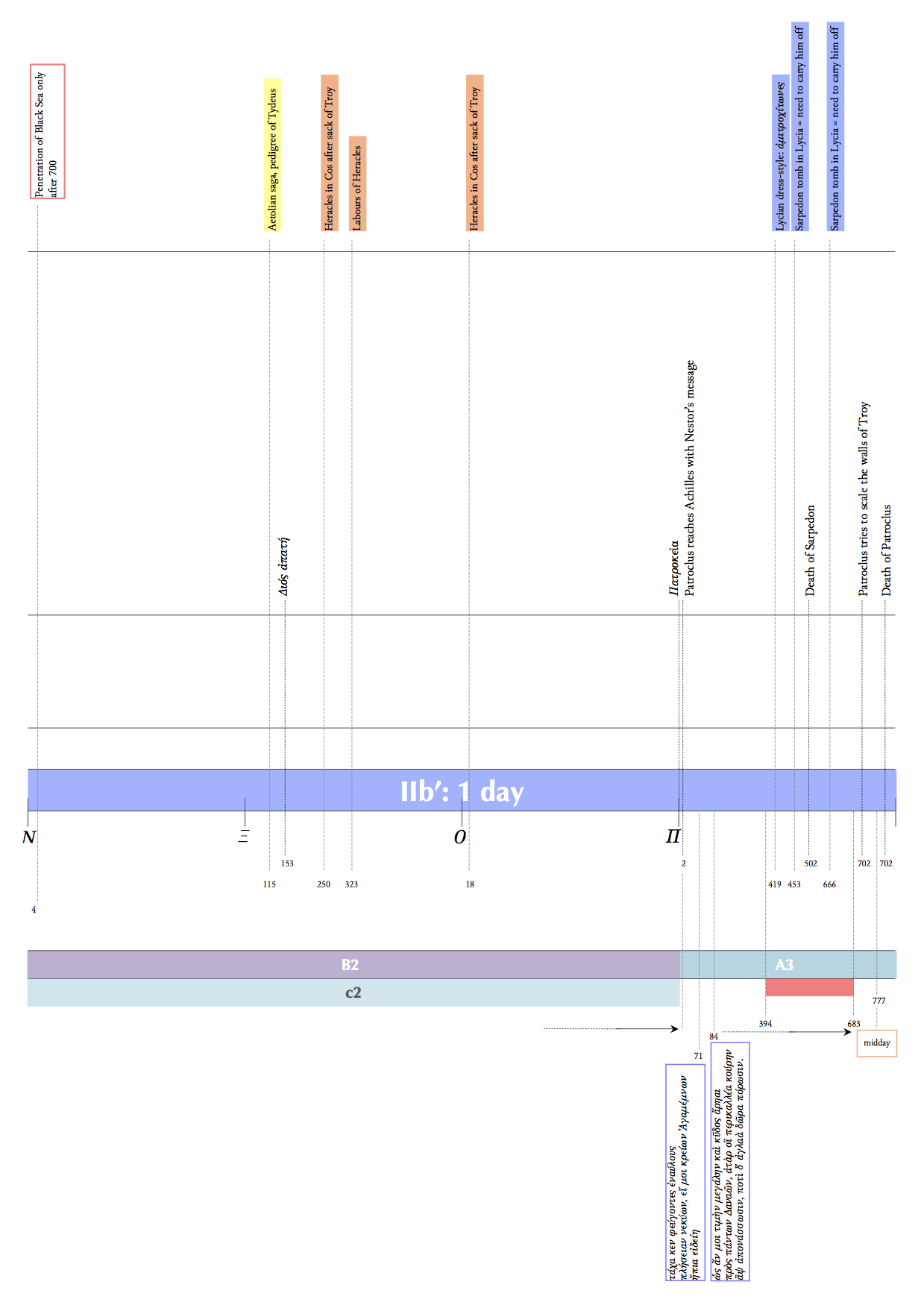
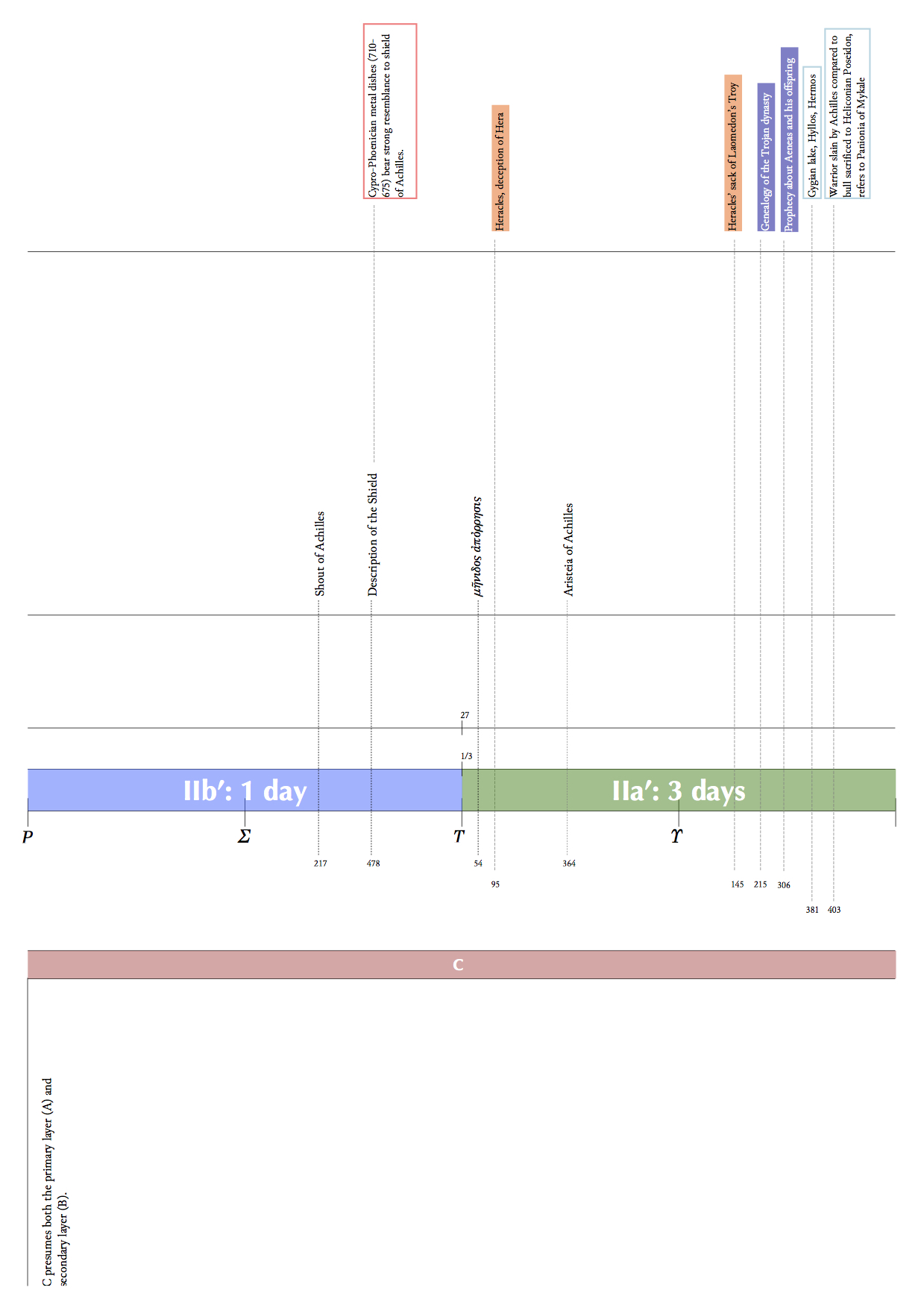
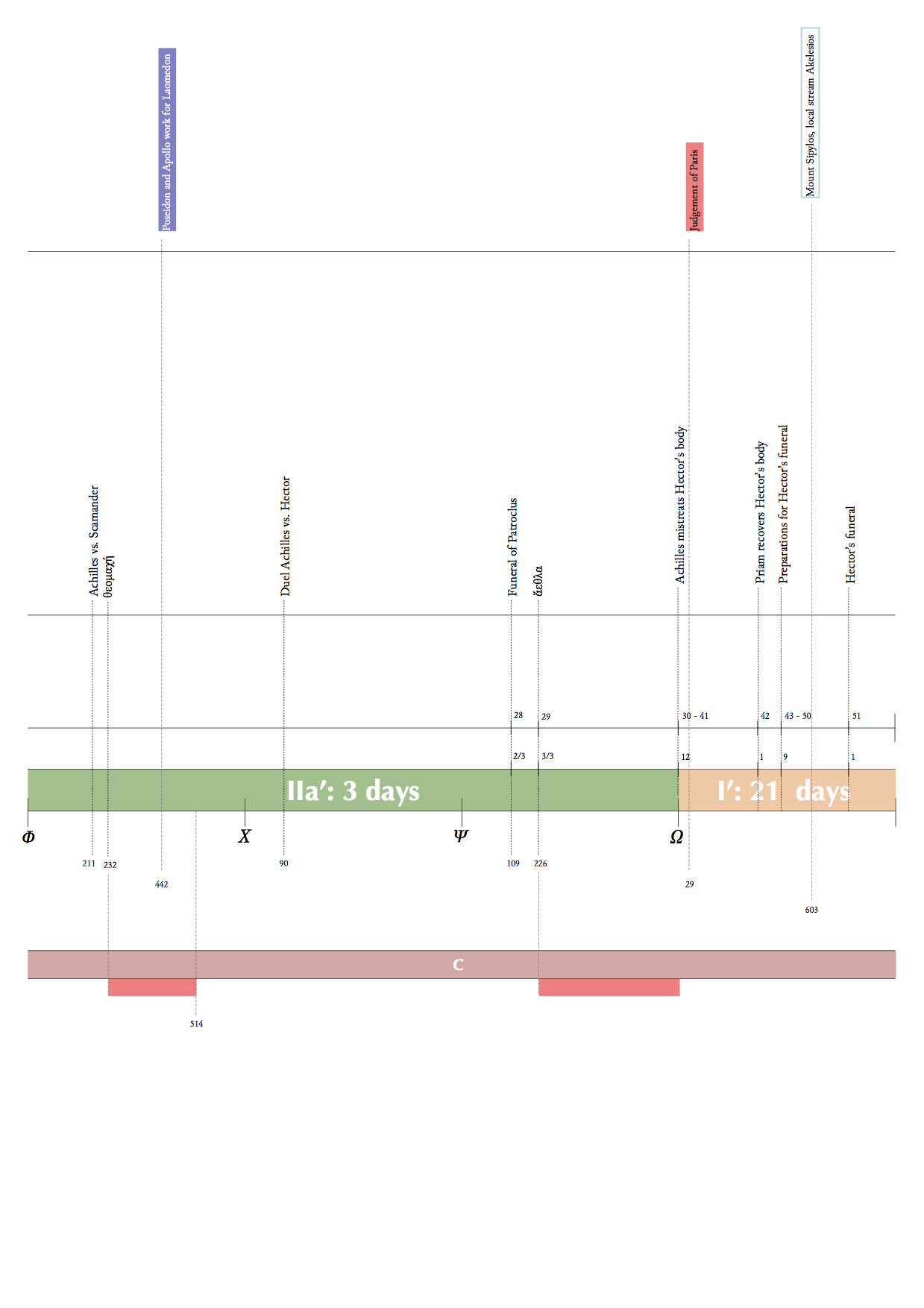
Well written. I enjoyed this blog post. It was inspiring and informative.
Hi.
The tables for Book 1-4 and Book 5-9 are same: E-Q